Mrigal fish is a very common and popular carp fish species which is found and native to Indo-Gangetic riverine system. It is a very important fish and is one of the three Indian major carp species cultivated widely in Southeast Asian countries. Other two are Rui and Catla fish.
Mrigal fish has long been important in commercial fish farming business with other native species in Indian subcontinent. Long records of raising this fish species is not available. But the traditional Mrigal fish farming was restricted to eastern parts of India until the 1950s.
The technology of artificial propagation which was a new way of fish farming assured seed supply in the 1960s. And it resulted the foundation of scientific carp culture. Mrigal grew quickly and performed well with other carp fish species. People kept it in ponds and then later moved it to rivers in India, where it now lives everywhere in the country.
Mrigal is actually a species of ray-finned fish in the carp family. It is also called Cirrhinus mrigala, Cirrhinus cirrhosus, Morakhi, Moree, White carp and Mrigal carp fish. It is native to streams and rivers of Southeast Asia, especially India. The only surviving wild population of this fish is in the Cauvery River, leading to it’s IUCN rating as Vulnerable. It is widely aquacultured in many countries, and also introduced outside it’s native range.
Today, Mrigal fish has become an important component in the fish farming systems of India, Myanmar, Pakistan, Bangladesh, Laos, Thailand and Nepal. It has also been introduced into China, Mauritius, Japan, Malaysia, Philippines, Sri Lanka and Vietnam.
Why Mrigal Fish is Highly Popular?
Mrigal fish is highly popular for several reasons. It is mainly popular for its fast growth rate, compatibility to raise with other fish species, cultural adaptation to different aquaculture systems and also for the assured supply of seeds.
Mrigal fish is one of the 3 Indian major carp fish species, cultivated widely in Southeast Asian countries. It has long been important in aquaculture with other native fish species.
Mrigal is a very popular fish and has very good local demand and value. Commercial Mrigal fish farming can be a great employment source for the unemployed people, and it’s a great business for making high profits in relatively less investment.
Fast growth rate, compatibility to raise with other fish species, adaptation to different aquaculture systems, and assured supply of seeds has made Mrigal a very important fish both in small scale and commercial fish farming business.
Characteristics
The Mrigal fish can grow very big. Their body is bilaterally symmetrical and streamlined. The depth is about equal to length of head. Their body is covered with cycloid scales, and there are no scales on their head and snout blunt. Their mouth is broad, transverse (the upper lip entire and not continuous with lower lip).
They have pharyngeal teeth in 3 rows 5.4.2/2.4.5 pattern; lower jaw with a small post-symphysial knob or tubercle. Pectoral fins of the Mrigal fish are shorter than head, and the anal fin don’t extend to caudal fin. The Pectoral, pelvic and anal fins with 18-19, 9 and 8 soft rays respectively. The caudal fin is homocercal and deeply forked.

Body color of the Mrigal fish is usually dark grey on the back and silvery on the sides and belly. Their fins are of grayish color, tips of pelvic, and the lower lobe of caudal are tinged orange (especially during the breeding season).
The mouth of these fish is devoid of any teeth on the jaws, like all other carp fish species. They can generally reach a maximum length of around 1 meter, with an average length of around 40 cm. Average live body weight of the fish is around 1-2 kg, with a maximum weight of around 12.7 kg.
Diet
Mrigal fish are the benthopelagic and potamodromous plankton feeder. Naturally they are mainly feed on detritus such as debris found in the bottom layers of the water. They are also a keen algae and invertebrates feeder. But today they are feed commercial feeds in commercial production.
Reproduction
Hatchlings of Mrigal generally remain in the surface or sub-surface waters. But the fry and fingerling tend to move to deeper water. And the mature fish are bottom dwellers. Depending on location, Mrigal fish generally reach maturity within their 1-2 years of age, when their body length reach around 34 cm. In natural conditions, generally breeding occurs during the south-west monsoon season in shallow newly inundated wetlands and or river side pools. They generally breed in water of 0.5-1.0 m. The females can lay up to a million eggs. Artificial breeding is very popular for this fish species.
Lifespan
Average lifespan of the Mrigal fish is around 10 to 15 years in the wild. But exact lifespan can vary based on factors such as environmental conditions, habitat, and the presence of predators. Their lifespan might also be influenced by the farming practices and conditions.
Distribution and Natural Habitat
Mrigal fish is native to Southeast Asia, but mainly found in India. It’s natural habitats are ponds and rivers. Along with the availability in India, currently this fish is also available in Myanmar, Pakistan, Bangladesh, Laos, Thailand, Nepal, China, Mauritius, Japan, Malaysia, Philippines, Sri Lanka and Vietnam.
Mrigal is a very important fish species in commercial fish farming business. It grows fast and commercial production is very profitable along with other Indian carp fish species. It’s very easy to make good profits from this business.
Nutritional Value and Health Benefits
Mrigal fish highly nutritious. A 100 grams serving provides:
- Calories: 120–150 kcal
- Protein: 18–20 grams
- Fat: 3–5 grams
- Saturated fat: 1 gram
- Carbohydrates: 0 grams
- Omega-3 fatty acids: Varies, generally low to moderate
- Vitamins: Contains B vitamins (like B12 and niacin)
- Minerals: Good source of phosphorus, potassium, and calcium
The Mrigal fish is not just tasty, it’s very nutritious and good for health. It is a very good source of protein, essential vitamins and minerals. It contains calcium, phosphorus and vitamin A. Consuming this fish is good for bones, teeth and also eyes. Mrigal fish also provides omega-3 fatty acids, which are very good for our hearts and brains.
Cooking and Popular Recipes
The Mrigal fish is mainly used for food. It has great economic importance in it’s native range. And people love to cook it in many different ways. It can be fired, grilled, or just cooked in a spicy curry. Preparing the fish is very easy and many traditional and popular Mrigal fish recipes available. Some popular Mrigal fish recipes or dishes are:
- Spicy Mrigal fish curry
- Grilled Mrigal fish
- Mrigal fish fry
- Mrigal fish in coconut curry
- Biryani
- Tandoori
- Kebabs
- Soup
Mrigal fish holds a special place in Indian culture. People have been farming Mrigal and enjoying it for a long time, making it a part of Indian traditions. In most areas, Mrigal fish often finds it’s way to the table in festivals and celebrations.
Mrigal’s presence in various culinary dishes in Indian subcontinent reflects the rich cultural diversity of Indian cuisine. Mrigal also a symbol of togetherness, because it gets along well with other carp fish species in the same pond.
Taste
Mrigal fish has a mild, delicate flavor that is often described as slightly sweet. The flesh is tender and flaky when cooked. The fish is very popular among the Indian people.
Price
It is not possible for us to tell the exact price of Mrigal fish. Because exact price depends on numerous factors and can vary from place to place. Generally, you can expect the price ranging from $ 5 to $15 per pound in the United States. And in India, average price of the Mrigal fish is typically range between ₹150 to ₹300 per kilogram.
Special Notes
The Mrigal fish are fast growers. They are generally a species of freshwater, but can also tolerate high levels of salinity. It is very popular as a food fish, and a very important aquacultured freshwater fish species throughout South Asia. It is widely cultured as a component of a polyculture system of 3 Indian major carps, along with Rui and Catla fish.
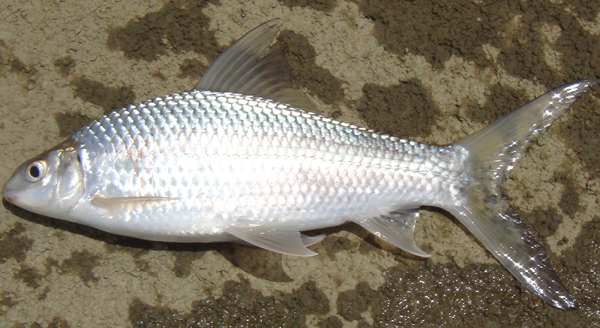
The introduction to aquaculture across India started in the early 1940s and in the 1950s and in the 1960s to other Asian countries. However, review full breed profile of the Mrigal fish in the following chart.
| Name | Mrigal |
| Kingdom | Animalia |
| Phylum | Chordata |
| Class | Actinopterygii |
| Order | Cypriniformes |
| Family | Cyprinidae |
| Genus | Cirrhinus |
| Species | C. cirrhosus |
| Binomial Name/Scientific Name | Cirrhinus mrigala |
| Other Names | Also called Cirrhinus mrigala, Cirrhinus cirrhosus, Morakhi, Moree, White carp and Mrigal carp fish |
| Breed Purpose | Mainly food |
| Weight | Generally 1-2 kg, with a maximum weight of around 12.7 kg |
| Special Notes | Mainly a freshwater fish species, but can also tolerate salinity, very fast growers, very popular as food fish in their native areas, very popular in polyculture with Catla and Rui fish |
| Breeding Method | Both natural and artificial |
| Climate Tolerance | Native climates |
| Body Color | Usually dark grey on the back and silvery on the sides and belly |
| Rarity | Common |
| Availability | South Asia |
Frequently asked questions (FAQs)
People often ask different questions regarding this fish species. Here we are trying to list the most common and frequently asked questions related to Mrigal fish and trying to answer these questions.
What is a mrigal fish?
Mrigal is a species of freshwater fish which is most commonly found in rivers and lakes in South Asia. It is particularly found in India, Bangladesh, and Nepal. Mrigal is part of the carp family and it is known for its commercial importance in aquaculture. It is most often raised for its tasty flesh and is a popular choice among the commercial fish farmers. Mrigal has a cylindrical body, a forked tail, and a silvery appearance. The fish is highly valued for its fast growth rate and adaptability to different environmental conditions.
What does mrigal fish eat?
Mrigal fish consume foods from the bottom level of the water. They are primarily herbivorous and mainly feed on a variety of plant material. Their diet mainly includes phytoplankton, aquatic plants, detritus, zooplankton etc. Although, their exact diet can vary depending upon the availability of food and the environment. In commercial production, you also have to feed them formulated fish feed that contains proteins, vitamins and minerals.
What is mrigal fish called in English?
Mrigal fish is commonly called as “Mrigal” in English. Although, it is often categorized under the general term “carp” due to its family classification. It is also sometimes called “Mrigal carp” in some context.
Is mrigal fish good for health?
Yes, Mrigal fish is highly nutritious and is a good source of some important vitamins and minerals. And consumption of mrigal fish provides several health benefits.
Where can I buy mrigal fish near me?
You can buy Mrigal fish from several places including your local fish markets, supermarkets, online grocery stores, aquaculture farms etc.

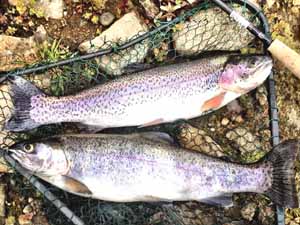
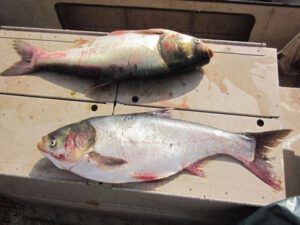
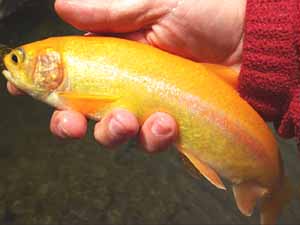
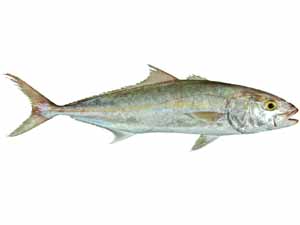
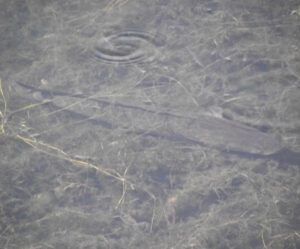

Is Mrigal fish tastes good?
Yes, sure! These fish are very tasty. Good luck!